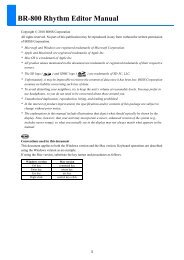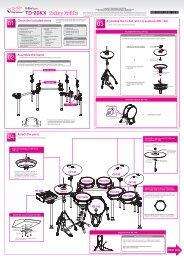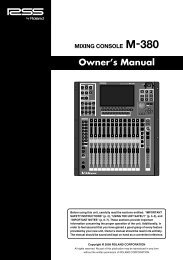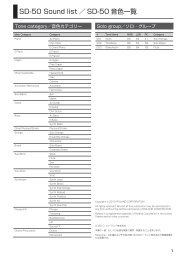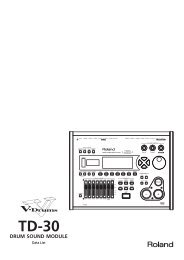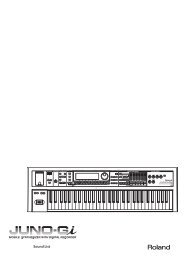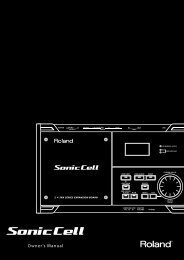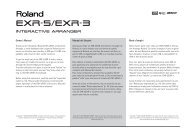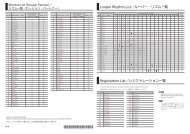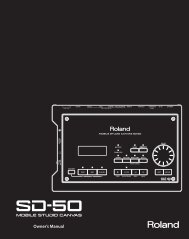GAIA Exploring Sound (PDF) - Roland Corporation Australia
GAIA Exploring Sound (PDF) - Roland Corporation Australia
GAIA Exploring Sound (PDF) - Roland Corporation Australia
Create successful ePaper yourself
Turn your PDF publications into a flip-book with our unique Google optimized e-Paper software.
Now switch on TONE 2, select it for editing, and follow this Action<br />
List:<br />
Audio 8.7 Oscillator Sync 3<br />
Figure 8.8 Oscillator Sync 2<br />
To understand what is happening here you need to realize that<br />
you have set the Pitch of TONE 1 higher than that of TONE 2.<br />
Now when you play the keyboard you will have a combination of<br />
two sounds. One playing the notes as expected, the other rising<br />
and falling in pitch.<br />
Figure 8.9 Sync Diagram<br />
Audio 8.6 Oscillator Sync 2<br />
Notice that TONE 1 always begins by climbing in pitch, this is<br />
because we have selected Key Trigger.<br />
Now the exciting part; Press the Mod switch in the Oscillator<br />
section to select Sync. It doesn’t matter if you have TONE 1 or<br />
TONE 2 selected. The Mod switch affects them both.<br />
Play the keyboard and you will get a classic synthesizer sound<br />
from the early 1980s, one that is still used today.<br />
Then, by turning on the Sync function you are asking TONE 1 to<br />
try to synchronize it’s Pitch to that of TONE 2.<br />
Take a look at this picture of the two TONES:<br />
You can see that every time Oscillator 2 crosses the zero axis it<br />
“tells” Oscillator 1 to “start again.” As a result Oscillator 1 exhibits<br />
the character of both pitches. It sounds like it is in tune with<br />
Oscillator 2, but also has some of the character of the higher<br />
pitch.<br />
101




